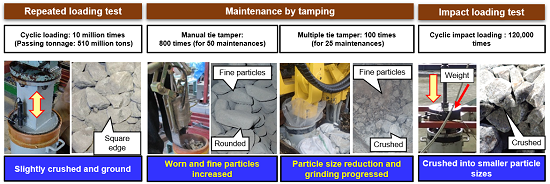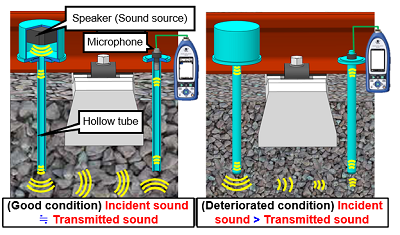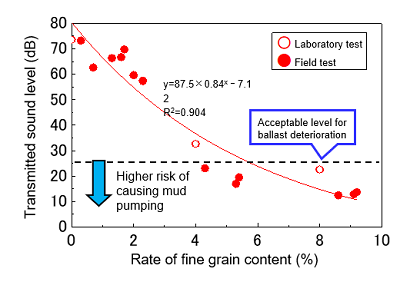11. Ballast soundness inspection method using sound characteristics
Ballast is crushed and ground due to aging, but the factors that cause this have not been clarified fully so far.
Therefore, cyclic loading tests assuming the train load, tamping tests using a tie tamper and multiple tie tampers, and impact loading tests assuming the impact load generated on rail joints were conducted to clarify the factors that cause crushing and refining. The results of the tests show that the deterioration of ballast was affected more by tamping than by train load, that manual tie tamper work could generate fine particles, and that grains of a larger particle size could be crushed into fine particles by multiple tie tampers (Fig. 1).
Periodical inspection to evaluate the state of deterioration of ballast is typically done by excavating the ballast to visually examine it; however, there are issues regarding the labor required for excavation as well as discrepancies in evaluations due to the subjective views of the inspectors.
Therefore, an inspection method has been developed to evaluate the state of deterioration of ballast quickly and quantitatively by evaluating the loudness of sound transmitted inside the ballast (Fig. 2).
Based on a laboratory test and a field test using this method, it was clarified that there was a strong correlation between the rate of fine particle content, which was a major factor in causing mud pumping, and the loudness of the sound transmitted inside the ballast (Fig. 3).
The proposed method can reduce inspection cost by 70% compared to the conventional method, as the state of deterioration of ballast can be evaluated in a short time.



